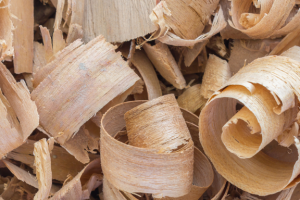At the time of writing many parts of Australia are in various stages of lockdown with one big positive being it has coincided with the Olympic Games. Who would have thought a year ago we would develop a first name relationship with the medical experts and epidemiologists providing the invaluable daily briefings on the battle with the virus. Let alone become experts in BMX freestyle and our new hero Logan Martin from Logan. One only has to look at the BMX track he has built in his backyard to see where all those building materials are going.
So whilst COVID and the Olympics, understandably dominate the news cycle it can surprise that our industry is still very active in supplying fibre to the region and timber and wood panel products for the local housing market.
As recently as October 2020 the softwood export log trade was running at some 300-400,000m3 per month with China as the main destination. However, as can be seen in the following graph this trade hit the wall late last year due to trade disruption which has affected a number of Australia’s exports to China.

The good news is the trade has evolved with new markets emerging in India, Korea and Vietnam. Smaller sales to other countries such as Indonesia, Malaysia and Thailand have also been made in recent months. Volumes are still volatile so it remains unclear if these are spot sales or ongoing market opportunities.
The change in markets and the lower volumes has also impacted the ports where logs are being exported from. Based on the recent trade data for June a comparison for the period Jan to June for the past 3 years highlights the changes in main ports.

The aggregate softwood log sales for Jan to June 2019 shows strong export activity from the Queensland (ports of Brisbane, Gladstone), Victoria (ports of Melbourne, Portland) and NSW (ports of Sydney, TwoFold Bay). In the equivalent period in 2021 activity is more concentrated with exports mainly being shipped from the ports of Melbourne, Portland and TwoFold Bay. It will take time to understand where the displaced export sales end up. Many of these logs were generated from silviculture activities or out of specification logs for domestic processing. So it will be interesting to see if this current trade challenge impacts thinning operations and/or results in changes in domestic processing.
However, at a macro level trade with China couldn’t be stronger. Australia’s exports to China reached some A$145 billion in 2020 which was 2.16% less than 2019’s total of A$148.4 billion, which was the highest since 1988. The bulk of this has been iron ore which has seen record prices providing a windfall for our mining companies.
Nevertheless, China continues to purchase record levels of logs, just not from Australia. New Zealand which has been a major supplier of softwood logs to China over the past decade has recovered from COVID 19 affected trade in 2020 to see solid increases in volume in 2021.

It would be hard to know if Australia’s lost export sales have been picked up by New Zealand other than to observe that New Zealand’s export volumes continue to grow.
However, to put that all in perspective, in terms of trans-Tasman rivalry we can measure, it’s important to note the Matildas, the Kookaburras and the Hockeyroos all got the right result in Tokyo.



